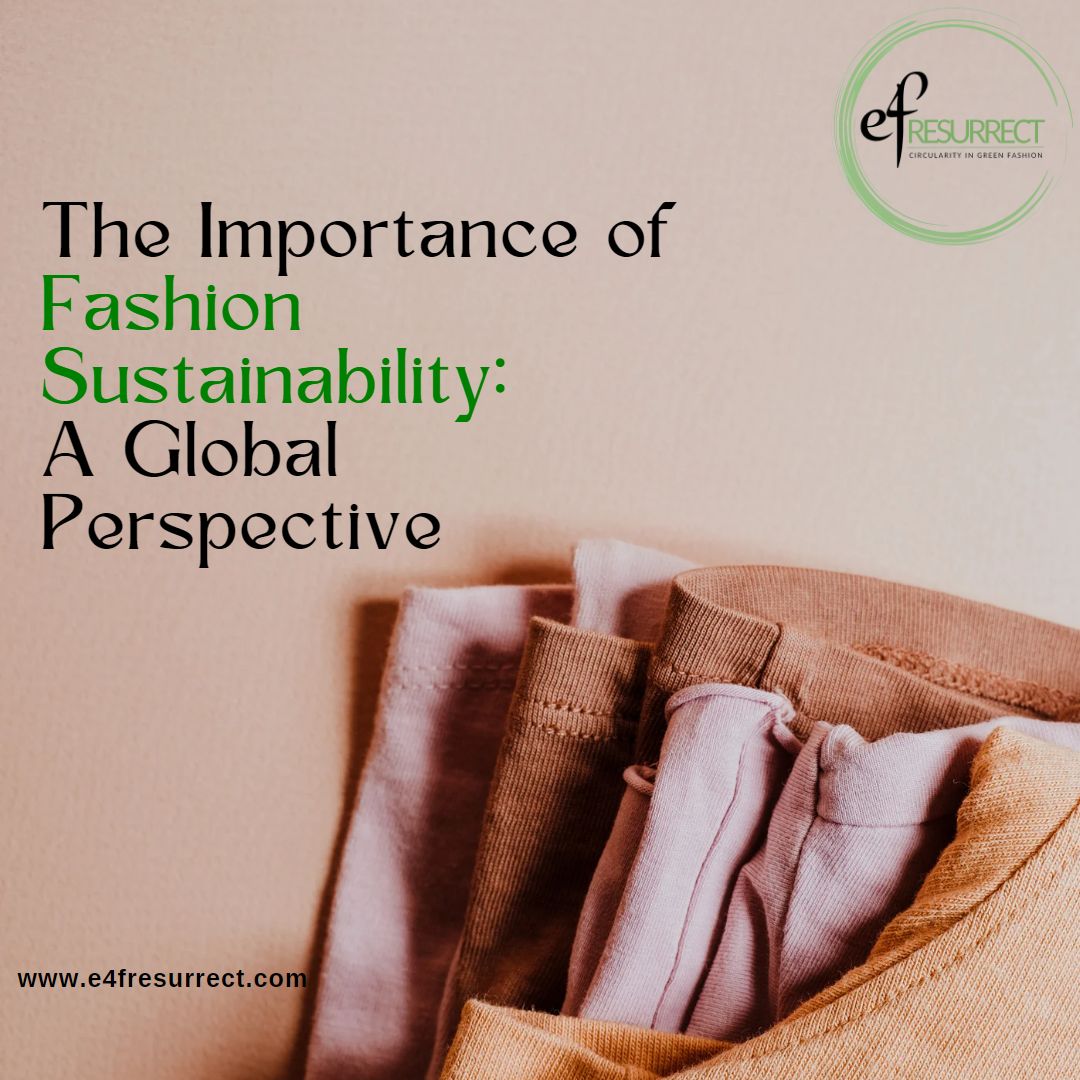목차
- Understanding Sustainability in Fashion: Defining the Core Concepts
- The Role of Innovative Materials: A Path to Sustainable Fashion
- Trend Analysis: The Rise of the Conscious Consumer
- Collaborative Approaches: Fashion and Technology Partnerships
- Practical Strategies for Industry Professionals: Tools and Frameworks
- The Future of Fashion: Envisioning a Sustainable Path Ahead
In today’s rapidly evolving fashion landscape, sustainability has become an imperative topic. This article delves into the relationship between fashion and sustainability, offering insights into industry practices, tools, and strategies that professionals can adopt to thrive in a conscious market.
Understanding Sustainability in Fashion: Defining the Core Concepts
Understanding sustainability in fashion is crucial as it shapes the industry’s future. Sustainability in this context encompasses environmental, social, and economic dimensions.
At its core, sustainability in fashion means creating products with minimal negative impact on the environment, promoting fair labor practices, and ensuring that economic practices support whole communities rather than exploiting them.
The environmental aspect emphasizes reducing waste, carbon emissions, and water usage. Brands are now exploring sustainable materials and production processes that do not compromise the earth’s resources. Social sustainability focuses on fair labor practices and safe working conditions, ensuring that the people who make fashion items are treated ethically. Economically, sustainable fashion includes supporting local economies and investing in long-lasting quality over fast fashion.
As fashion continues to evolve, understanding these core concepts is vital in fostering innovation and responsible consumption. The interplay between culture and sustainability drives change, leading to a more conscientious industry.
To illustrate these points, refer to the image below that highlights the significance of sustainable practices in fashion.

The Role of Innovative Materials: A Path to Sustainable Fashion
The fashion industry has witnessed a significant transformation in its approach to materials, driven by a collective shift towards sustainability. As the environmental impact of conventional textile production comes under scrutiny, innovative materials present a promising path forward. Key alternatives, such as organic cotton, hemp, and recycled fabrics, are redefining the standards of fashion while promoting ecological responsibility.
Organic cotton, cultivated without synthetic pesticides and fertilizers, is a prime example of how sustainable practices can yield high-quality fabrics. Brands like Patagonia and Eileen Fisher have embraced organic cotton in their collections, not only for its reduced environmental footprint but also for its inherent softness and comfort. Hemp, with its remarkable ability to grow in diverse climates and require minimal resources, is gaining traction as a robust alternative. Brands such as Jaden Smith’s JUST Water and Reformation are leading the charge by incorporating hemp fibers into their lines, showcasing the versatility and durability of this material.
Recycled fabrics, derived from post-consumer waste, further exemplify innovation in sustainable fashion. Companies like Adidas are spearheading initiatives to produce athletic wear from recycled plastics, proving that sustainability does not compromise style or performance. The collaboration between adidas and Parley for the Oceans, which transforms ocean plastic into functional sportswear, has garnered widespread attention and set a precedent for future sustainable collaborations.
To illustrate the scope and impact of these innovative materials, the following table summarizes notable sustainable fashion brands and their contributions:
| Brand | Material | Innovation |
|---|---|---|
| Patagonia | Organic Cotton | Sustainability in outdoor wear |
| Eileen Fisher | Organic Cotton | Circular fashion initiatives |
| Adidas | Recycled Fabrics | Ocean plastic transformation |
| Reformation | Hemp | Sustainable women’s clothing |
Moreover, the integration of innovative materials does not stop at eco-conscious choices. Brands are also exploring bioplastics and lab-grown fabrics, which signal the future potential of fashion being aligned with environmental stewardship. As consumer demand for sustainable options continues to grow, these strides in material innovation will undeniably shape the future landscape of the fashion industry.

Trend Analysis: The Rise of the Conscious Consumer
The rise of the conscious consumer represents a significant shift in consumer behavior towards sustainability within the fashion industry. This movement is driven by a growing awareness of environmental issues and ethical considerations, marking a departure from fast fashion toward more sustainable practices. Today’s consumers are not only interested in products but also in the stories behind them, demanding transparency and accountability from brands.
Social media plays a crucial role in this transformation, serving as a platform for environmental advocates and influencers to share information and raise awareness. Platforms like Instagram and TikTok allow consumers to engage with brands on a personal level, creating a community around sustainable fashion. This engagement fosters a sense of responsibility, encouraging consumers to make informed choices that align with their values.
Moreover, consumer education has become a pivotal factor in this trend. As more information about the impacts of fast fashion on the environment surfaces, consumers are more empowered to research and choose brands that prioritize sustainability. Brands that effectively communicate their sustainable practices and engage with customers through storytelling tend to build stronger relationships with their audience.
To illustrate this change, consider the following table summarizing key trends influencing the rise of the conscious consumer:
| Trend | Impact |
|---|---|
| Social Media Influence | Amplifies sustainability messages and connects consumers with brands. |
| Increased Consumer Education | Encourages informed purchasing decisions based on ethical considerations. |
| Demand for Transparency | Forces brands to disclose supply chain practices and sustainability efforts. |
This evolving landscape highlights the interconnectedness of fashion, culture, and innovation, as brands adapt to meet the needs of a more environmentally conscious audience. As sustainable practices continue to gain traction, the relationship between consumers and the fashion industry is poised for further transformation.

Collaborative Approaches: Fashion and Technology Partnerships
Collaborative approaches between fashion brands and technology firms are increasingly seen as a viable pathway to enhancing sustainability in the fashion industry. These partnerships aim to leverage technological innovations to reduce environmental impact, improve supply chain transparency, and enhance consumer engagement with sustainable practices.
One notable example is the collaboration between H&M and Google. This partnership focuses on using AI and big data to optimize production processes and predict consumer demand more accurately. By analyzing data trends, H&M can minimize overproduction—a significant issue in fast fashion—thereby reducing waste and resource consumption. This initiative not only aligns with sustainability goals but also boosts operational efficiency.
Another interesting case is the partnership between Adidas and Parley for the Oceans. This collaboration produces footwear and apparel made from recycled ocean plastic, effectively transforming waste into high-quality fashion items. The use of blockchain technology in this partnership enhances supply chain transparency, allowing consumers to trace the origins of their products and understand the environmental benefits associated with their purchase.
Additionally, the luxury brand Stella McCartney has also embraced technology through her collaboration with the tech company Eco-Age. Together, they developed tools to assess the environmental impact of materials used in fashion. These tools help designers make informed choices about sourcing and production, ultimately promoting sustainable practices across the industry.
The emergence of digital platforms and apps that promote sustainable fashion consumption further illustrates the interconnectedness of fashion and technology. Apps that allow consumers to rent clothes or exchange used items foster a more circular economy. Such platforms often use advanced algorithms to suggest items to users based on their preferences, making sustainable choices more accessible and appealing.
Moreover, the impact of technology on supply chain transparency cannot be overstated. Brand partnerships with technology providers are enhancing visibility at every stage of the supply chain, ensuring that ethical practices are maintained. For instance, transparency software from companies like Provenance enables brands to share verifiable information about product origins, materials, and labor practices directly with consumers.
Next, we can review the table below, which summarizes key collaborations in the fashion technology landscape:
| Brand | Technology Partner | Sustainability Focus |
|---|---|---|
| H&M | Optimizing production and minimizing waste | |
| Adidas | Parley for the Oceans | Recycling ocean plastic |
| Stella McCartney | Eco-Age | Material impact assessment |
In summary, the shifts towards sustainability in fashion are significantly bolstered by innovative partnerships with technology firms. These collaborations not only pave the way for sustainable practices but also engage consumers, enhancing their awareness and involvement in the fashion industry’s journey towards greater responsibility.
Practical Strategies for Industry Professionals: Tools and Frameworks
In the evolving landscape of fashion, professionals are increasingly tasked with integrating sustainability into their practices. This chapter will explore practical strategies, tools, and frameworks that can facilitate this transition while enhancing creative output.
One of the most impactful tools for fashion professionals is Artificial Intelligence (AI) for trend forecasting. AI technology can analyze vast amounts of data—from social media trends to purchasing behaviors—providing insights that help brands anticipate consumer preferences. By understanding emerging trends, brands can make informed decisions about materials and designs, ultimately reducing waste in the production process.
In tandem with AI, eco-assessment tools have become vital for evaluating the environmental impact of materials and processes. These tools allow professionals to analyze life-cycle assessments (LCAs) of products, enabling them to determine the carbon footprint, water usage, and overall sustainability of their choices. By utilizing these insights, companies can pivot towards more eco-friendly materials and practices, fostering a culture of responsibility.
Moreover, the adoption of frameworks such as the Sustainable Apparel Coalition’s Higg Index helps brands measure their sustainability performance across the supply chain. This collaborative approach encourages transparency and fosters accountability, making it easier for brands to set and reach sustainable goals.
Another noteworthy development is the innovation in supply chain technologies. Blockchain, for instance, offers enhanced traceability from raw materials to finished products. This not only helps in verifying the sustainability claims but also builds consumer trust.
Incorporating these tools into the fabric of fashion design and production is essential for professionals aiming to align with sustainable practices. By embracing technology and innovative frameworks, the industry can make strides toward a more sustainable future.
| Tool/Framework | Purpose | Benefit |
|---|---|---|
| AI Trend Forecasting | Analyzes consumer data | Reduces waste and enhances relevance |
| Eco-Assessment Tools | Evaluates material sustainability | Informs eco-friendly choices |
| Higg Index | Measures sustainability performance | Encourages accountability |

Ultimately, by leveraging these innovative tools and frameworks, industry professionals can contribute significantly to making the fashion domain more sustainable, aligning their creative endeavors with a greater purpose.
The Future of Fashion: Envisioning a Sustainable Path Ahead
The fashion industry stands at a crossroads, faced with the dual challenge of meeting consumer demands while minimizing environmental impact. As we look toward the future of fashion, sustainability emerges not merely as a trend but as a fundamental responsibility. The path ahead demands continuous innovation and a willingness to embrace change.
In the coming years, we can expect a push towards technological advancements that enhance sustainability. Innovations such as biodegradable fabrics, waste-reducing manufacturing processes, and advanced recycling techniques will not only revolutionize how clothing is produced but also how it is disposed of. The integration of AI and big data in fashion will allow for better forecasting and reduced overproduction, directly addressing one of the industry’s most pressing issues.
However, this journey is fraught with challenges. One of the primary obstacles is the need for a cultural shift among consumers and manufacturers alike. While eco-consciousness is on the rise, it is essential to ensure that sustainable choices remain accessible and appealing to the wider market. Moreover, transparency in supply chains is crucial. Brands must commit to ethical sourcing and production practices to gain consumer trust.
Opportunities abound for collaboration across sectors. Fashion brands can partner with tech companies and environmental organizations to foster a circular economy. This not only enhances their sustainability efforts but also positions them as leaders in a rapidly changing landscape.
Looking ahead, the future of fashion hinges on our ability to remain adaptable. Companies that prioritize sustainable practices and invest in innovation are likely to thrive. Furthermore, as consumer awareness grows, brands that authentically engage with sustainability will cultivate loyalty and trust. This dynamic evolution is not merely a possibility; it is an imperative for survival in the interconnected world of fashion and sustainability.

In summary, sustainability is not just a trend—it is a fundamental shift in the fashion industry. Embracing innovative practices and collaboratively addressing challenges are essential for creating a sustainable future. Let’s continue exploring new ways to inspire and influence positive change in our industry.
Sustainability in Fashion: Importance and Challenges
The Future of Sustainable Fashion: Trends and Innovations
How Technology is Transforming Fashion Sustainability
SustainableFashion,FashionIndustry,EcoFriendly,InnovativeMaterials,ConsumerTrends,FashionTechnology,IndustryCollaboration,


